Cinquefoil: description and varieties, planting and care

Cinquefoil is actively used today in the design of landscape design for summer cottages and urban areas. It looks beautiful, is not picky to care for and goes well with many garden plants. In this article, you will learn everything about Potentilla: its description, popular varieties, as well as the intricacies of planting and caring for this unusual plant.

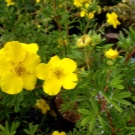


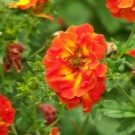
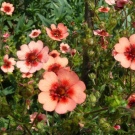
Description
Cinquefoil is one of the varieties of herbaceous plants of the Rose family. Most often it can be found in the northern hemisphere in areas with a temperate climate.
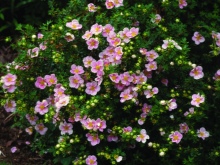
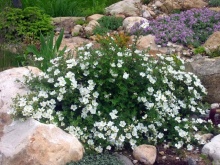
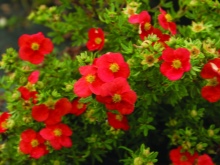
To date, more than 300 varieties of Potentilla are known, but about 60-70 species and varieties are actively used in gardening. Thanks to numerous selection studies, gardeners managed to invent both annual and perennial versions of Potentilla.
It should be said that at least 150 varieties of Potentilla are growing on the territory of Russia today.
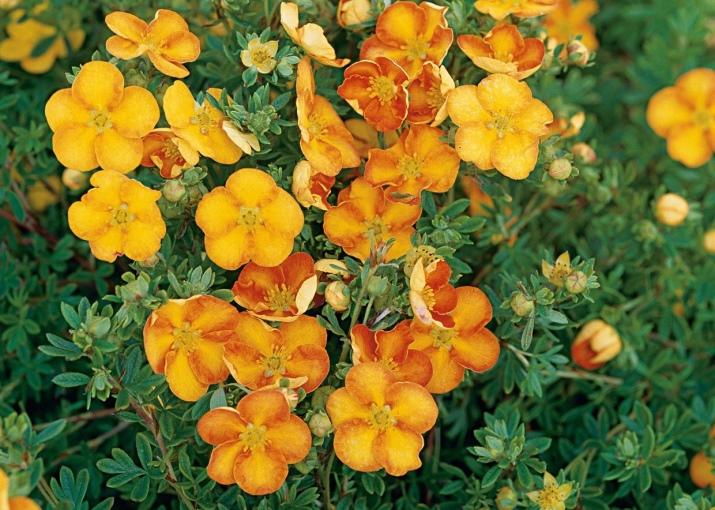



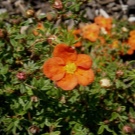
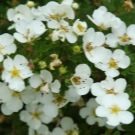
The appearance of these plants varies greatly depending on the particular variety.
- Stems are of a straight or creeping type with characteristic nodes on the stems, which, when in close contact with the soil, form a root system.
- The shape of the leaves, depending on the variety and type of plant, can be either trifoliate, pinnate, or fingerlike. In addition, stipules can often be found in Potentilla.
- The shade of the inflorescences of the classic Potentilla is lemon-yellow, however, there are varieties with pink, white, red and orange inflorescences.
- Flowers are usually arranged singly along the Potentilla bush, however, they can form full-fledged inflorescences of 5-6 flowers. The number of flowers per 1 bush of Potentilla varies depending on the age and variety of the plant - from 10 to 80 or more flowers. The shape of the flowers is round or saucer-shaped.
- The flowering period of these plants, depending on the variety, lasts from May to August, for 55-60 days. In the first year after planting in a new place, Potentilla usually does not bloom.
- The height of Potentilla varies greatly depending on its type. So, there are varieties with a maximum height of 25 to 90 cm. Regarding the structure of the crown, Potentilla can be either spreading or grow straight in height.
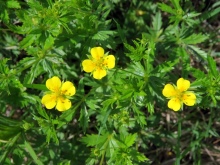
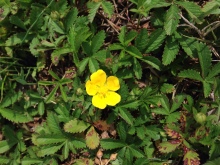

Types and varieties
As already mentioned, today more than 300 varieties of such a plant as Potentilla are known. In this paragraph, the names and brief descriptions of the most striking of them will be considered.
White
This cinquefoil is a perennial low-growing plant with a small height (up to 25 cm). Its characteristic feature is its large white flowers up to 2.5 cm in diameter. Such cinquefoil blooms from May to August and is able to withstand even severe frosts down to -30 degrees Celsius.
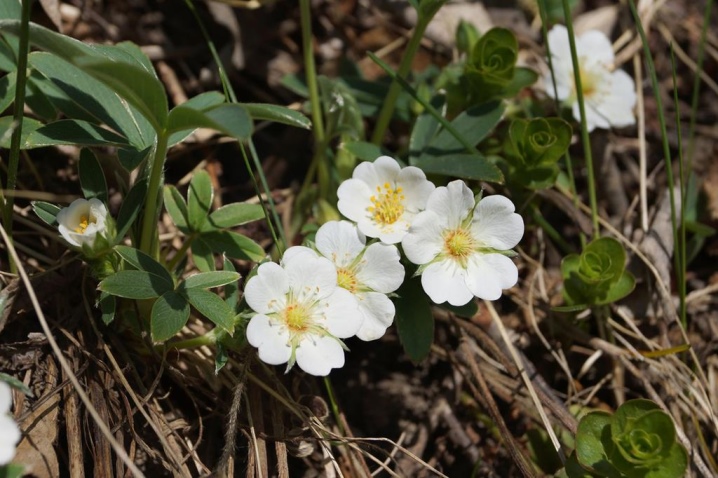
"Goose foot"
This cinquefoil also belongs to low-growing plants (up to 20 cm in height). A characteristic difference is the bright yellow leaves and the creeping structure of the stems, thanks to which this cinquefoil can grow up to 2 meters in diameter. The flowering period is similar to the flowering of the white species, the frost resistance is just as high.

Blood red
The homeland of this unusual variety of Potentilla is the Himalayas. There, this plant with blood-red leaves can grow up to 90 cm in height. The flowers of the plant differ in diameter up to 3 cm.
The shape of the leaves of the plant is obovate with characteristic denticles at the edges (it may resemble strawberry leaves).
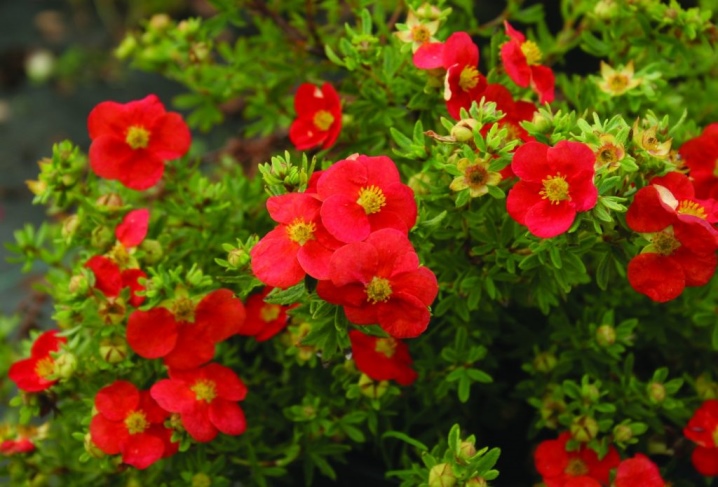
Leafy
A characteristic feature of this species is living at an altitude of several thousand meters in a natural environment. These are perennial plants with a height of up to 30 cm and an average flower diameter of 1.5-2 cm. The pale pink flowers of this variety rarely form massive inflorescences and are evenly distributed throughout the plant.

Shrub
A popular variety in the territory of modern Russia. Differs in large yellow flowers in massive inflorescences, as well as a height of up to 1.2 meters. Unlike other varieties, this one blooms from July to October. This plant also has a second name - Kuril tea.
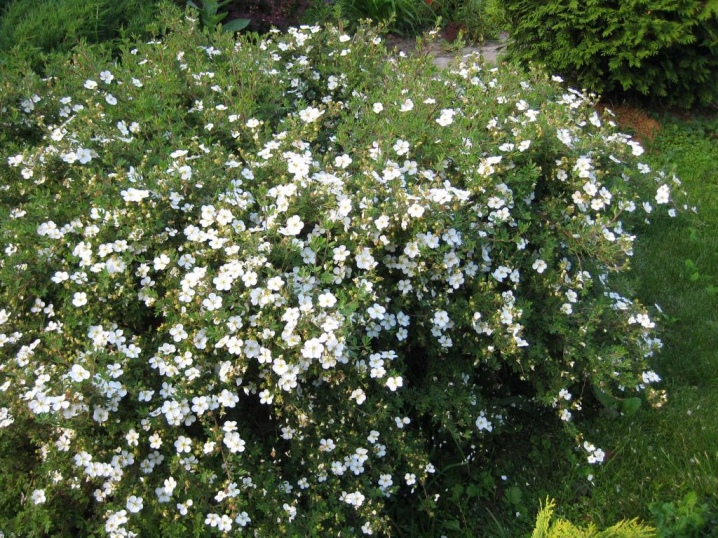
Today, many gardeners are more inclined to planting mixtures from different varieties of Potentilla than to planting any specific species. This allows you to refresh the landscape design with several shades at once. The most popular mixture of seeds for such planting is "Summer Motive".
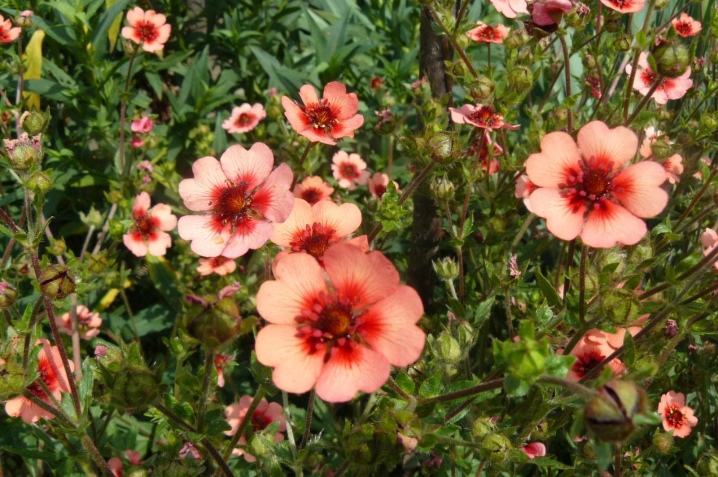
Planting and leaving
Despite the fact that Potentilla refers to picky plants in terms of planting and further care, you should still pay attention to some points during these processes.
We take into account the climate and choose a place
Almost all varieties of garden Potentilla are very tolerant of even the most aggressive weather conditions, and therefore it can be planted even in the northern regions of the country.
The main nuance here is that the timing of planting seeds of a plant or cutting cuttings is slightly shifted towards the warmest season.
Cinquefoil is not a picky plant when it comes to choosing land for planting. She can perfectly take root in any type of soil, but most of all she loves neutral, slightly acidic and fertile soil. An important role is played by the air and water permeability of the soil - they can also affect the flowering of the plant.
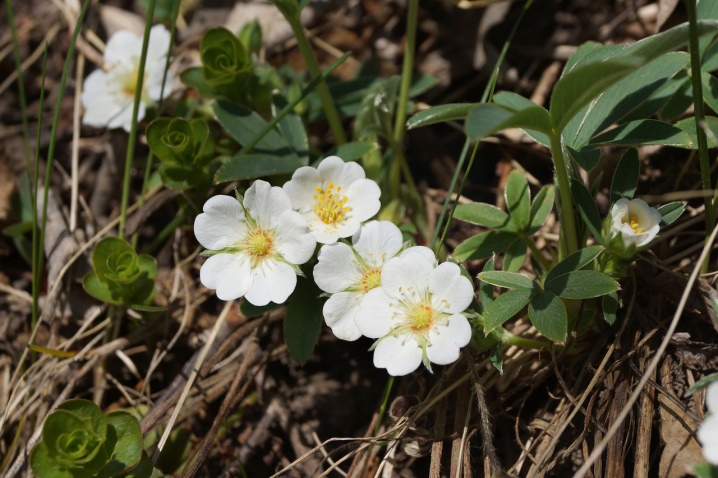
Councils for choosing a place.
- For planting, you should choose open places on a flat area. Avoid planting a plant in a lowland - in this case, moisture will constantly accumulate at the roots of the plant.
- The ideal place for planting Potentilla should be illuminated by the sun in the morning and evening, and in the shade at noon and until 4 pm.
- Do not plant Potentilla in areas with access to cold winds. It can break the branches of a plant or provoke diseases. The best option for planting would be a place protected at least on one side by a fence, house or other plants.
- Such a plant should not be planted near trees and mature shrubs. In this case, the cinquefoil will receive less sunlight, moisture and vitamins from the soil.
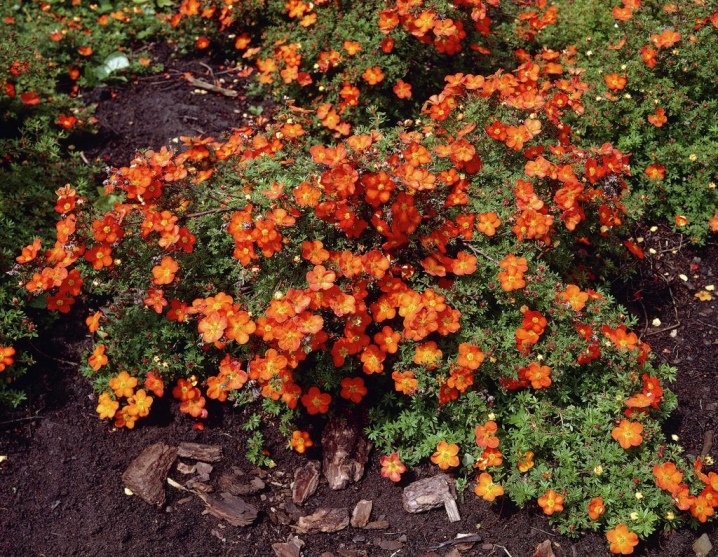
How to plant?
The process of planting a young Potentilla bush should not cause difficulties even for novice gardeners.
- Dig small holes 40 by 40 cm in the ground, depth - 60. Keep in mind that they should be at least 30 cm apart from each other, regardless of the type of Potentilla.
- Place a drainage layer at the bottom of the well to wick away moisture. It can consist of crushed stone, gravel or pebbles. The layer should be at least 7-10 cm.
- Prepare the soil for planting Potentilla. To create a nutritious and rich soil, you need to create a mixture of sand (1 part), leafy earth (2 parts), humus (2 parts) and any mineral fertilizer (about 150 grams, depending on the age of the plant).
- Divide the resulting mixture in two. Place the first one on top of the drainage layer. Then place the plant itself in the hole, making sure that its roots grow in different directions and do not rest on hard ground.
- Cover the plant with the remaining soil so that the root collar protrudes slightly above the ground.
- Water the plant abundantly and add a layer of mulch to retain moisture at the roots. In its role, straw, peat, bark of pine trees or needles can be used.
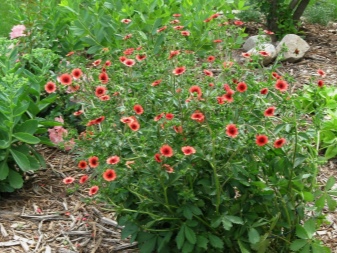
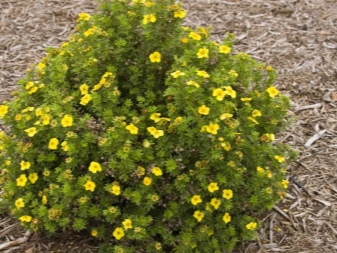
Watering
Cinquefoil can do without moisture for quite a long time, and therefore this plant should be watered no more than 2 times a month.
Depending on the age and variety of the plant, 1 bush of Potentilla should have no more than 10 liters of water.
An important point - in no case should the soil completely dry out. That's why during planting of these plants, mulch is used, which retains moisture near the roots of the plant. In warm and dry seasons, the number of watering can be increased, while during the procedure itself, the soil near the roots of the plant should be carefully loosened. This will prevent cracking and allow the water to reach the roots of Potentilla faster.
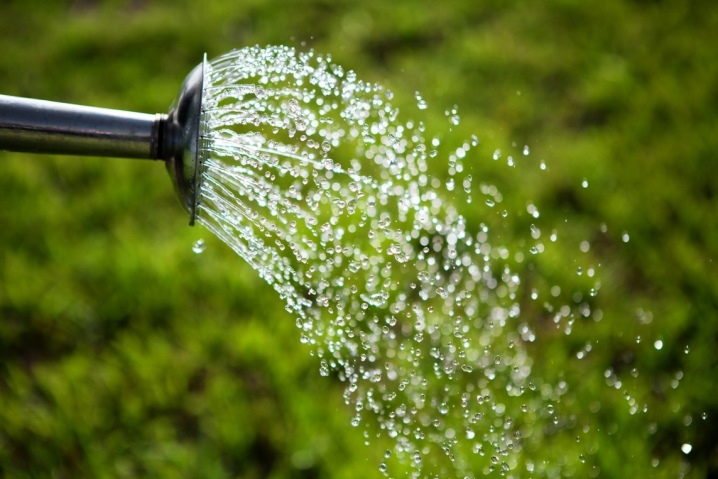
Top dressing
Any garden plant for full growth and development of inflorescences needs regular feeding. In the case of Potentilla, the soil should be fertilized no more than 1 time a year in early spring - even before bud formation.

A bucket of 10 liters should pass about 30 grams of top dressing. Potassium and phosphate are usually part of the fertilizer for Potentilla.
It will not be superfluous to feed young sprouts of garden cinquefoil, only planted in a permanent place. This will allow them to get sick faster and stimulate the growth of the root system.
Pruning
Pruning of Potentilla can be carried out for 3 reasons, depending on the variety and type of plant.
- Wellness. Pruning is carried out no more than once every 2-3 years to thin out the crown and improve ventilation inside the plant.
- Decorative. In this case, gardeners remove certain twigs or shoots to give the plant a certain shape.
- Preventive. It is necessary for removing diseased and dry branches.

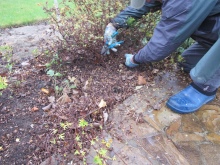
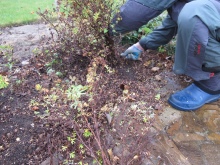
In the first case pruning is best done in autumn and remove about 1/3 of the entire length of the shoot... Decorative pruning can be carried out at any convenient time, but usually summer is chosen for this and strong and growing shoots are removed to increase the volume of the crown.
Preventive pruning is carried out every spring after the plant has overwintered.
How does it winters?
It should be said that most varieties and varieties of Potentilla, including shrub species, tolerate winter cold almost painlessly. Only young shoots of such plants need shelter for the winter, while adults are able to tolerate even extremely low temperatures. This makes Potentilla an ideal plant for planting in any regions of Russia - both in the Moscow region and in Siberia or the Caucasus.
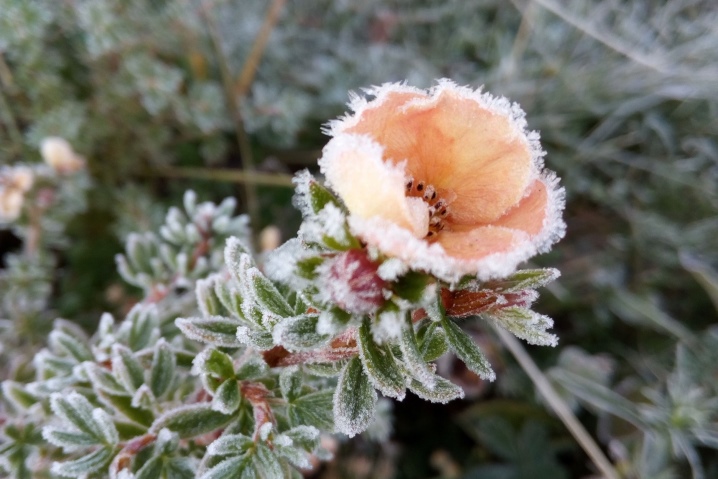
Diseases and pests
Fortunately, Potentilla is a garden plant with near-perfect health and resistance to many diseases. Even harmful insects prefer to bypass this bush.
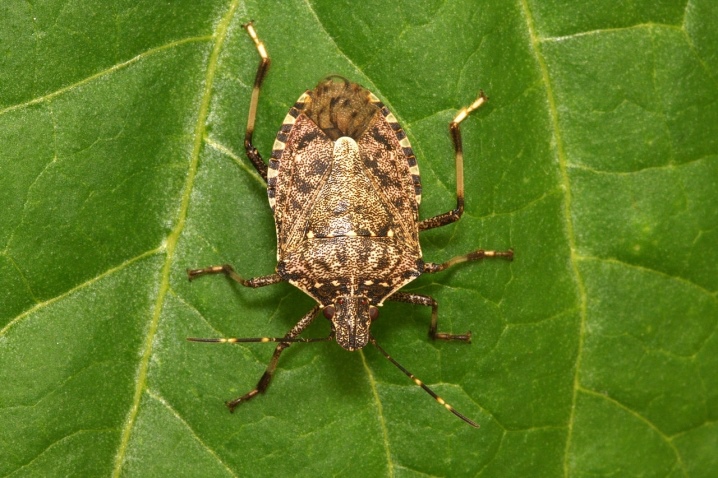
The most common diseases that can affect a culture.
- Rust. The scourge of almost all garden plants is expressed in the formation of characteristic brown or brown spots on the leaves. Spots can initially cover local zones, however, without proper treatment, they spread to all leaves, and the plant completely turns yellow.
- Powdery mildew. This fungal disease is expressed in the formation of characteristic white spots on the leaves or shoots of the plant. In this case, the cinquefoil is covered with a thin layer of frost.
- Scoop. This insect, as well as its caterpillars, literally eats leaves and inflorescences of garden plants. This leads to a gradual drying out of the shrub and loss of its appearance.
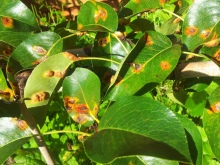
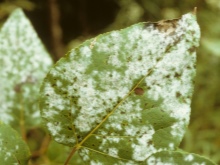
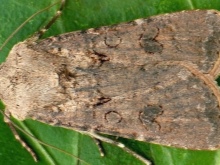
If an annual Potentilla variety has been infected, experienced gardeners advise not to make any efforts to treat it. In the same fall, the plant should be removed. If a perennial variety of Potentilla has undergone infection, first the infected areas of the plant are removed, then treatment with standard fungicides is carried out. They can be a Bordeaux mixture or


In the fight against pests, insecticides are used ("Fufanon", "Decis", "Fitoverm"). In this case, the removal of the affected branches is optional.
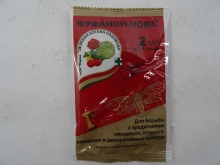

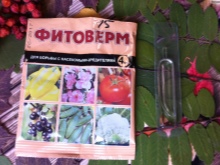
Transfer
Unfortunately, almost all varieties of Potentilla are bad for transplanting to a new place.These plants are under tremendous stress and in most cases die. If a transplant is nevertheless necessary, the gardener must carefully dig up the plant along with a lump of native land, carefully transplant it into a new hole and provide regular vitamin supplementation and watering.
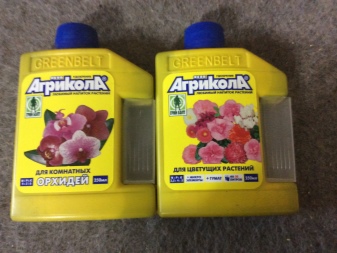

It is better to transplant only young plants or bushes formed as a result of reproduction by layering or dividing the bush.
Possible problems
If you regularly treat your Potentilla for pests or fungal diseases, but the plant still does not bloom or just dries, there may be several reasons.
Top dressing
This is one of the most pressing problems for gardeners who grow plants in infertile soils. A lack of vitamins in the soil can lead to such consequences as a decrease in the number of buds, slow growth of plant shoots, and a weakening of the root system.
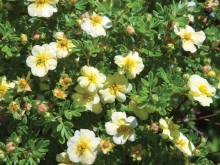
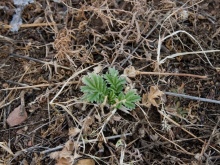
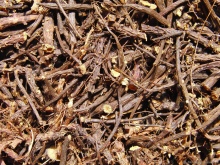
sunlight
Many gardeners are convinced that if a plant is declared as light-loving (like Potentilla), then it will feel great all day under the scorching sun.
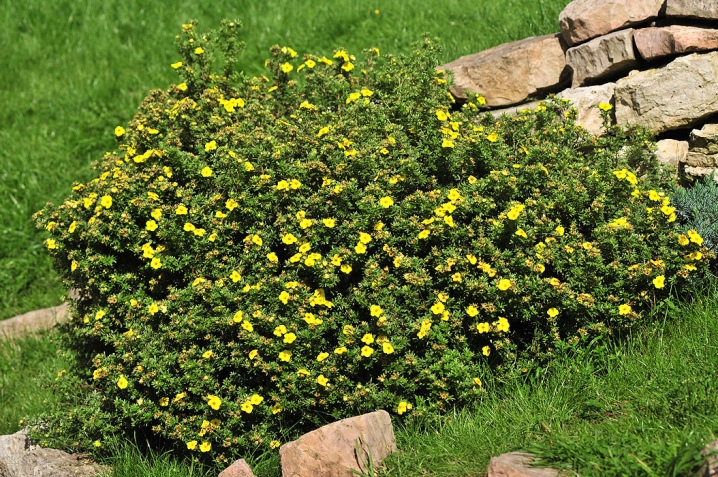
Yes, Potentilla does love the warmth of the sun, but only in limited quantities in the morning or evening.
Variety
Each type of Potentilla needs individual care and a balanced vitamin supplement. If the gardener was mistaken in determining the variety of his plant, improper care of it can lead to drying out, rotting or death of roots and leaves.
Reproduction methods
To date, only 2 methods of reproduction of Potentilla are used: seed and vegetative (diversion, cuttings, dividing the bush). Each of them is used for reproduction of a certain variety of Potentilla and requires different efforts and time costs from the gardener.

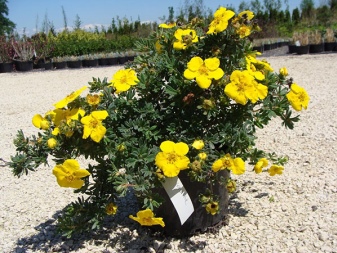
Seeds
In this case, the gardener has 2 options - he can directly plant seeds in the ground, where they will grow constantly, or grow healthy and strong seedlings from seeds for their further planting on the site.
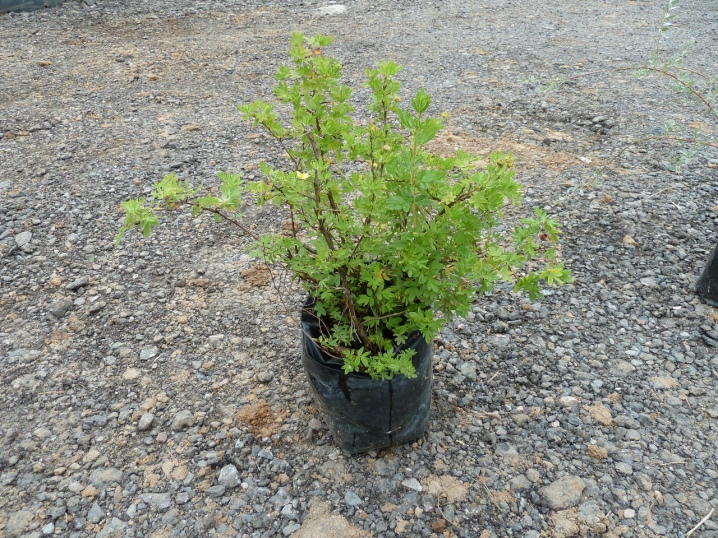
For planting seeds directly into the ground, it is advised to choose mid or early autumn. During the winter, the seeds will undergo a natural stratification process. In this case, plant sprouts will appear on the first warm days of spring, when the snow has completely melted.
This method is considered the easiest, however, during the winter period, many of the plant's seeds can rot or freeze in the ground.
If you decide to grow Potentilla seedlings at home, the following recommendations should help you.
- Seeds are best sown in February. When preparing the soil mixture for planting, it is not necessary to use any special fertilizers. Cinquefoil is very loyal even to soils that are not rich in vitamins, so a common substrate for indoor plants is suitable here.
- After choosing a suitable container (plastic or wood), line the bottom with a thin drainage layer to remove moisture. Crushed stone or expanded clay is used as drainage.
- Place the substrate in an even layer in a container and make several longitudinal grooves in the ground. Then water and, after the water has been absorbed, sow the seeds into the grooves.
- To create a favorable microclimate from above, the container should be covered with a plastic bag or cling film that allows light to pass through.
- Make sure that in the room where the container with seedlings is located, the temperature is always maintained at 15-18 degrees.
- Wait until the sprouts have 2 full leaves, and then pick. Most often, gardeners use plastic cups or peat pots for this.
- In late spring or early summer, seedlings should be planted in a permanent place and watered well. At the onset of winter, young plants take shelter, even if the Potentilla variety is known for its frost resistance.
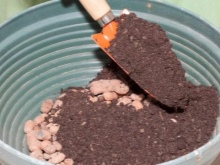


Vegetatively
Each of the vegetative propagation options implies a certain time for planting.For example, if this is a division of the Potentilla bush, then it is advised to carry it out in early spring or autumn. Collecting healthy and strong cuttings is best in the first months of summer, the same goes for the removal.

Dividing the bush
This procedure can only be performed with shrub cinquefoil over 4 years old. The plant should be carefully dug up, and then the roots should be thoroughly rinsed. Using a sharp garden knife, you should divide the bush into several full-fledged branches with roots, while each of them should have at least 3 buds. In order for new bushes to better cope with planting and quickly take root in a new place, their roots should be treated with a root formation stimulator. Bushes should be planted at a distance of at least 30 cm from each other.
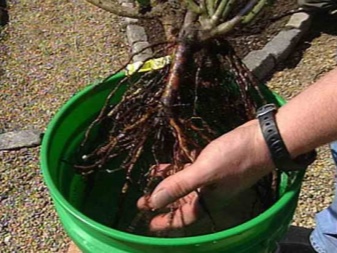
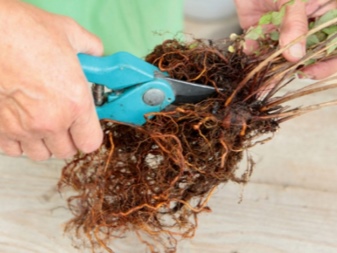
Cuttings
For this method, only green and strong branches of Potentilla from the very top of the stem (and at least 10 cm in length) are suitable. All inflorescences on the cutting should be removed - they will require a lot of energy and moisture to form roots. Cuttings can be planted in separate containers of perlite, or planted in an open area and covered with jars or bottles. It may take from 1 to 2 months to form full-fledged roots - during this time, the gardener should regularly spray the plant and cut off the blossoming buds.
For the winter period, cuttings should be covered if you planted them in open ground.

Diversion
For this method, you will need a healthy and strong twig from an already mature bush. Make a small incision on the branch, then lower it to the ground, reinforce it with a hairpin and sprinkle the cut with earth... In this case, the first roots should be formed by the end of this summer. Separate the layers from the mother plant in early to mid-autumn, then transplant to another place.
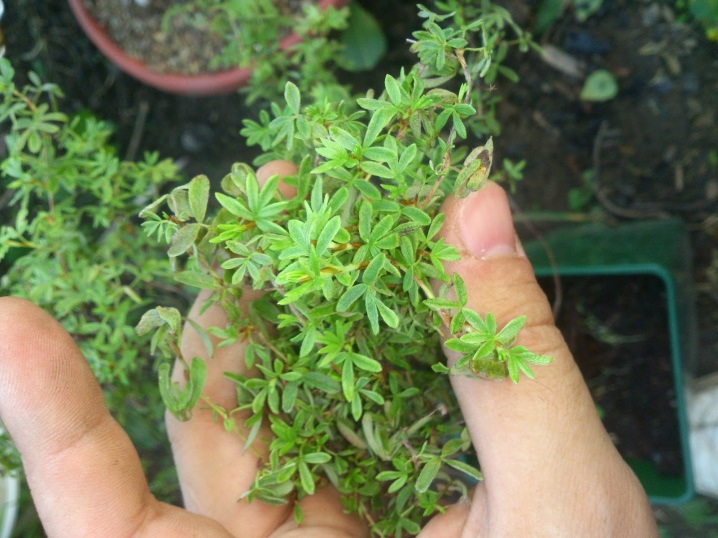
Use in landscape design
To date, Potentilla is very actively used in landscape design for both urban and private areas. People appreciate this plant for its unpretentious care, bright and rich inflorescences, as well as tolerance to any weather conditions.
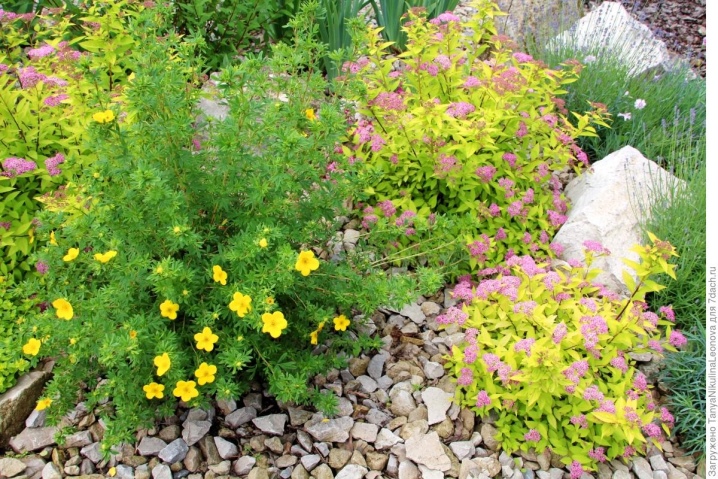
Variants of using Potentilla in the design of a summer cottage, garden or vegetable garden.
- As a hedge. In this case, this plant is used to highlight the boundaries of a particular decorative object. Most often, garden paths, gazebos or curbs act as its role. Keep in mind that these plants grow quite a lot, so they should be planted at some distance from the path.
- Near the rock garden. Alpine slides are a popular decoration of private territories today. Usually conifers are used for plant filling such objects. Cinquefoil, on the other hand, is able to create a pleasant contrast against the background of such plants and decorative stones.
- Supplement to the flower garden. Cinquefoil goes well with almost all garden plants. In some cases, especially if the site is decorated with conifers, Potentilla can refresh the flower garden, becoming the compositional center of the entire flower bed.
- Next to a decorative pond. In its natural environment, forest cinquefoil prefers to grow near water bodies. This location provides the plant with the necessary moisture during dry seasons. The same technique can be used in private areas.
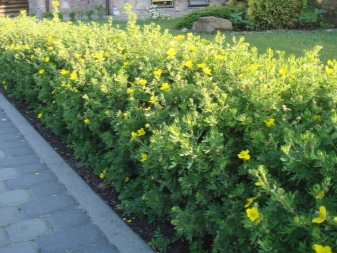
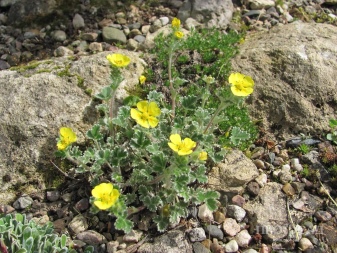
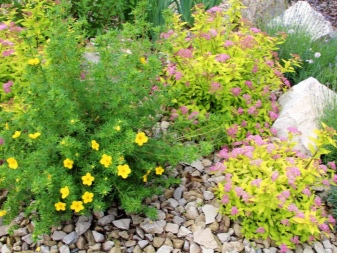
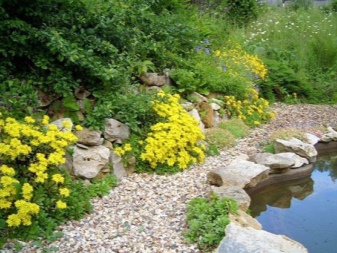
For more information on Potentilla, see below.






























































Excellent article, everything is clear, understandable, without "water". Thanks.
I love to watch and listen to the Euro-Plant presenter. Everything is clear and to the point. Well done!
The comment was sent successfully.